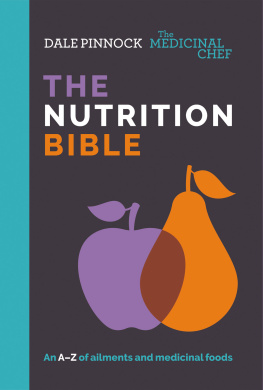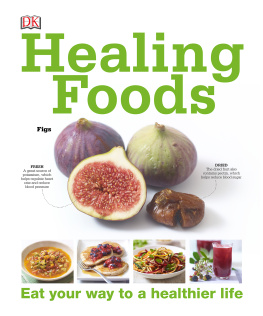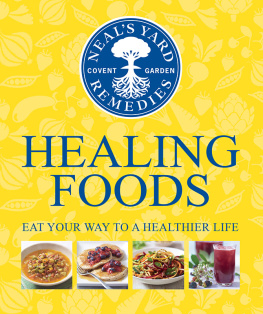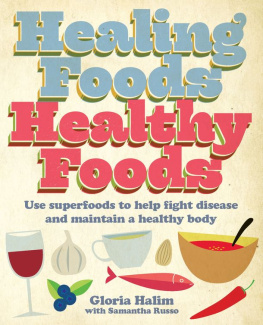The Copyright of this book, as well as all matter contained herein (including illustrations) rests with the Publishers. No person shall copy the name of the book, its title design, matter and illustrations in any form and in any language, totally or partially or in any distorted form. Anybody doing so shall face legal action and will be responsible for damages.
Dedicated
to
Daddy
ACKNOWLEDGEMENT
T his book is dedicated to my father, who instilled the importance of nutrition in my life. Had he lived, I am sure he would have been very proud of the way my hundreds of articles on food and nutrition have culminated into this book.
Words cannot express my feelings of gratitude towards the two most important people in my life, without whose constant encouragement and support; I would not have been what I am today. They are, my mother and my husband.
Thanks are due to my friend Shruti Sharma, who helped me in data collection and to Vandana Arya and Alex Tom for deciphering my handwriting and typing the manuscript.
Lastly, thank you Ram Avtar ji, for asking me to write this book.
Sunita Pant Bansal
NOIDA, (U.P.)
Contents
INTRODUCTION
A significant percentage of people have preventable disorders, many of which are caused by routine violations of good health and nutritional habits. Even borderline deficiencies can lead to different types of illnesses.
Insufficient or inaccurate knowledge, inability to obtain nutritious foodstuffs and supplements, and/or indifferent attitude towards self-care are the most common underlying reasons behind poor eating habits and resulting sickness. For example, all substances consumed in excess are toxic to the body. Consuming the same foods day after day, saturate the body and intoxicate it. Ultimately, rather than nourishing these foods repeatedly cause the body to react negatively. Even today most people believe that diet is only important in relation to weight loss and bodybuilding. Whereas, the diet is an important factor in overall health and well-being.
The right foods do have the power to heal just as the wrong foods can cause ill health. In India, Ayurveda has been around for many centuries. People not knowing Ayurveda have also been using indigenous herbs/ plants as household remedies since times immemorial, especially in villages and small towns, where access to medical facilities is not easy. Not only in India, herbs and plant food therapy has been successful through the ages all over the world. Why? Because the plants have certain properties that cure the disease and restore the natural balance in the body.
The drug industry has isolated the key components from the plants to use in the various therapies. For example, the most powerful drug used in cancer chemotherapy was isolated from the plant Madagascar Periwinkle. It is effective against breast cancer, but its side effects may be debilitating. Nature intended all the parts of the plant to work together, as buffers and regulators, minimizing side effects and aiding assimilation.
This book is an attempt to make available natures pharmacopoeia to the readers, as it is essential to know which plant/herb has therapeutic applications in which disorder/disease.
VEGETABLES
P eople have this misconception that a nutritious diet necessarily involves the use of expensive food articles. They forget that nature also provides us with food articles that are nutritious and can be obtained at a relatively low cost. Unfortunately, there exist some hurdles in the way of use of the vegetables. Often people are influenced by the traditional food taboos and beliefs that have no scientific basis. This is further complicated by the fact that people are carried away by the status value attached to a food unmindful of its nutritive value. For instance, it is a common belief that green leafy vegetables are poor mans food and that it is not prestigious to consume them. It is true that the leaves are inexpensive, however, this does not make them in any way inferior in their nutritive value.
Now let us see these vegetables with a different eye- the eye of a nutritionist. After all, what do these vegetables provide? All vegetables have one thing in common; they provide little energy and more of vitamins and mineral than any other food item.
Green leafy vegetables in general are rich in iron, calcium, vitamins A and C. Iron is required for the formation of haemoglobin (the red factor) in the blood, and vitamin C enhances the absorption of iron by our body system. They are also good for the eyes because of their good vitamin A content.
All the red and yellow vegetables like tomatoes and pumpkin are rich in vitamin A. Other vegetables like brinjal, bitter gourds are rich in B group vitamins. Other than vitamins, the vegetables also have good amounts of minerals like iron, potassium and calcium and of course fibre.
Vegetables are useful in weight reducing diets, as they provide bulk and give a feeling of satiety but provide few calories. The bulk and water content of vegetables also helps in the treatment of constipation.
There is a misconception that vegetables produce diarrhoea, especially in small children. This is a wrong notion. The fact is that the vegetables, especially the leafy contain large amounts of dirt and germs, which if not cleaned, will certainly produce diarrhoea. So they should be carefully washed before using.
In order to get the best out of the vegetables, they should be preferably used fresh and washed thoroughly before they are cut. The vessel in which they are cooked should be covered with a lid to prevent the loss of vitamin C. Frying and drying in the sun results in some carotene (vitamin A) loss, but do not be disheartened, other important nutrients like iron remain safe.
Vegetables should be consumed daily in diet in some form or the other - as vegetable dishes, cooked with dal or as salad. Other than maintaining good health, the vegetables also have curative powers, a fact which has been proved many times in many ailments including cancer.
AMARANTH











 23240026, 23240027 Fax: 011-23240028
23240026, 23240027 Fax: 011-23240028